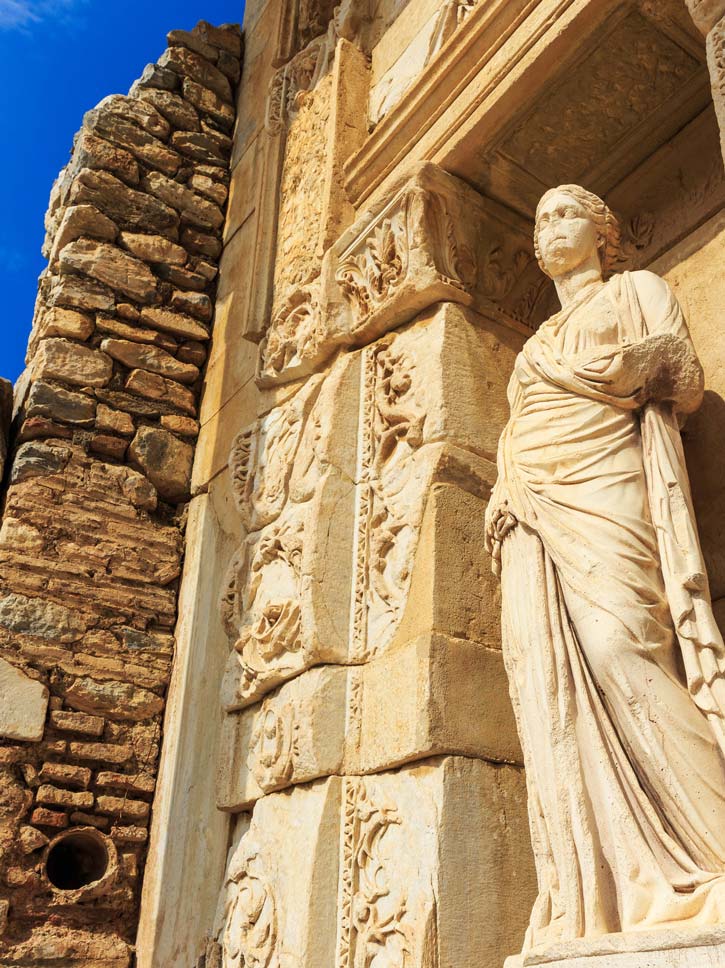Just one hour’s flight from Istanbul, the port city of İzmir has been an important trading center since time immemorial. Turkey’s third largest city, with a population nearing three million, İzmir is known domestically as the “Pearl of the Aegean” and remains a Western-looking cultural melting pot, but the biblical message warned of “impending persecution” while encouraging “perseverance that will be rewarded.”

The Temple of Trajan in Pergamon, Turkey. Photo © Halina Jasińska/123rf.
Forget mincing words: In the Book of Revelation this materialistic city is encouraged to repent for preaching mixed doctrines. Just two hours north of İzmir, Pergamum was a major metropolis in Asia Minor since the 3rd century BC, and its temples and healing medical center became influential places of worship for Greeks and Romans. Today’s Bergama is an increasingly influential city in terms of regional politics, mining, and agriculture.
While the locals were commended for their increasing faith, the Book of Revelation reprimands Thyatira’s church for also following the seductive prophetess Jezebel. The ruins of Thyatira, once known for its textile and dye trade, are about 65 kilometers from the Aegean Sea in the modern city of Akhisar, on the D565 highway, inland between Bergama and İzmir.
An hour southeast from Akhisar, this “dead” church was told to wake up from its long sleep and that some of its parishioners were “worthy” for they had not yet “soiled their clothes.” Sardis is strictly an archaeological site with spectacular temples and bathhouse complexes. Getting there is also possible with dolmuşlar from İzmir via Salihli.
This church of fraternal love is applauded for its perseverance, but told of a pending judgment of the false Jews who represented the “Synagogue of Satan.” Located about 45 kilometers southeast of Sardis in the modern city of Alaşehir, Philadelphia’s scant remains are still one of Asia Minor’s largest centers of temple worship.

The Celsus library in Ephesus, Turkey. Photo © Sorin Colac/123rf.
Early Christianity’s most important center was heralded in its time but is condemned in the Book of Revelation for “forsaking its first love.” Ancient Ephesus was one of Asia Minor’s prominent capitals; in fact, it was the Roman Empire’s second largest city. Today, it’s the world’s best-preserved ancient site, replete with a hub of ancient streets, arches, temples, and monuments, including its spectacular funeral library and a whopping 25,000-seat amphitheater. Base yourself in Selçuk or Kuşadası to make the most of this site.
Criticized as a church of “lukewarm” faith, the Book of Revelation tells Laeodicea’s wealthy church to forgo adoration of worldly goods to focus on its spirituality. The ruins of Laodicea, once an important stop on the east-west trade route just north of modern-day Denizli, have slowly been excavated since 2003.